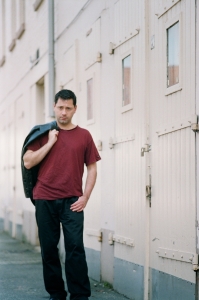René
Mense
Composer

- Biography
- Performances
- Concert Management
- List of Works
- Chamber Music
- Works for Ensemble
- Vocal Music
- Sacred Music
- Orchestral Works
- Arrangements
- Audio Samples
Study
II: Überblendungen (Cross-fades) (2008)
for
violoncello, 2'30"
Complete Recording (MP3) 2.9 MB
With Studie II an attempt has been made to make a connection between the baroque “Ricercari” of Domenico Gabrielli (1651-1690) and the neo-baroque “Sonata for Solo Cello” by György Ligeti (1923-2006).
The “Ricercari” were the very first publications ever for solo cello; Gabrielli was a virtuoso cellist himself and composed his “Ricercari” in 1689, shortly before his early death. Ligeti’s sonata was created around the year 1949, immediately after finishing his music studies and, besides the idiom of Hungarian folk music, also displays influences of Bela Bartòk. Another work from this early period of Ligeti’s is the “Musica Ricercata” (1951-1953) for piano which is dedicated to Bartòk. Here, the title already indicates the reference to baroque forms and compositional principles.
The baroque ricercar (Ital. ricercare, to search) unites the imitative techniques of the motet, resp., the madrigal and forms from instrumental improvisation such as the toccata and fantasy. Another characteristic is that of a gradual searching for the key (modus). The combination of all of these elements also makes the ricercar into a forerunner of the prelude and fugue.
In the Studie II, my intention was to virtually “cross-fade” the neo-baroque figuration of the Ligeti sonata, on the one hand, into a musical past that pre-dated Gabrielli’s baroque and, on the other, into the future of composing, as Ligeti practiced it after his emigration to the west.
This past and that future converge through a kind of “hinge”, namely, microtonal intervals, which I derive from the ancient Greek tetrachord handed down in the theory of the Sýstema téleion by Aristotle’s pupil, Aristoxenus of Tarentum.
The framing interval of the tetrachord, the fourth a – e (also e’ – b), was fixed. The middle tones g and f (or d’ and c’) could, however, be lowered stepwise. This led to three modes, of which, in late antiquity as well as in the Renaissance, effectively only the “diatonic” was made use of again. In theory and certainly also in practice, around the year 1500, however, various music scholars in Italy experimented with the ”depraved” types of “enharmonic” and “chromatic” modes. This is the area into which I attempt to musically cross-fade.
The use of these in-between steps upends the unstable relationship of the two modes of my study, namely the Phrygian A and Dorian G, so that the search for the key, which is what defines the baroque ricercare, is continued ad absurdum.
By contrast, on the other side of the timeline, Ligeti’s later works, in which he used microtonal intervals and non-tempered tuning, are the inspiration behind the cross-fades of my study.
Legal notice | Photography by Susanne E. Fraatz | English Translation by Laurie Schwartz | Design by Frank Ralf